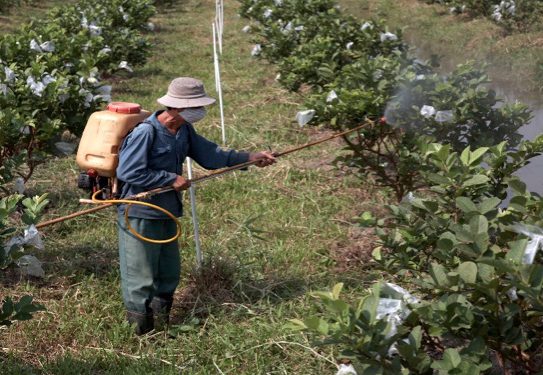Antibiotic use in vegetable crops globally is not being monitored enough, despite suggestions it could impact the human immune system, according to a new study.
The study’s results are important to limiting medicinal antibiotic resistance, through over-consumption of antibiotics. Human health is endangered when antibiotics in medicine are rendered ineffective to bacteria. But some of the antibiotics sprayed on vegetable crops are critically important in human medicine.
The investigation was conducted jointly by the Food and Agriculture Organization (FAO), World Organization for Animal Health (OIE) and World Health Organization (WHO) and has been published on CABI Agriculture and Bioscience.
Assumptions that usage was low have been wrong, with the report estimating that each year 63 tonnes of streptomycin and seven tonnes of tetracycline (both critically important antibiotics in human medicine) are sprayed on the rice crop in South East Asia alone.
It said the antibiotics we ingest through medicine or eating meat are being well documented. But the lack of knowledge about their use in vegetables is of growing concern, particularly given that in some local and extreme cases 700 times more antibiotic is being used in agriculture than in human medicine.
Bacteria can develop resistance up to 100,000 times faster when antibiotic is mixed with other agrochemicals
Co-author, Dr Rob Reeder, said, “Further research into the scale of antibiotic use in crop protection is warranted as the potential for interactions with other crop protection products that might promote cross-resistance or co-selection for antibiotic resistance is considerable.
“There is considerable attention paid to the medical and veterinary use of antibiotics, but there is a paucity of data on their use in global crop production. The only well documented use of antibiotics on crops is that on top fruit in the USA. These data appear to indicate that the use of antibiotics in crop production is more extensive than most of the literature would suggest.”
Fellow author Philip Taylor added, “It has been shown that when antibiotics are mixed with other agrochemicals, bacteria can develop resistance to the antibiotic up to 100,000 times faster. This coupled with the consumption of raw food may provide an avenue for the production of resistant bacteria.
“Some evidence suggests that crops are a potential vehicle for resistant bacteria to enter the human gut and is an area where further research is needed. The science around the development of antibiotic resistance is still being hotly debated with those who advocate their use on crops are quick to point out that there is no proven evidence of resistance having spread from plant pathogenic bacteria to human or animal pathogens.
“It is hoped that the data presented in this paper will increase the debate regarding the use of antibiotics against crop pathogens and that crop production will be included under the One Health umbrella.”
At the beginning of 2019, in response to an outbreak of citrus greening, the US Environmental Protection Agency proposed treating the US citrus crop with up to 292 tons of streptomycin each year. By comparison, American medicine uses annually around 6.3 tons of aminoglycosides, the class of antibiotics that includes streptomycin.
The researchers found that 11 antibiotics (often blended together) are being recommended on crops grown in the Americas, Eastern Mediterranean, South East Asia and the Pacific rim countries.
Only three per cent of 158 countries regularly assessed in any way the types and amounts of antibiotic use on crops.
By comparison, 26% per cent of countries monitor antibiotic use in human medicine and 23% per cent monitor antibiotic use in animal health.
The new research was an analysis of more than 436,000 records from Plantwise plant clinics in 32 countries between 2012-2018.
Antibiotics are being recommended as prophylactic treatment on over 100 crops, in copious quantities in some cases.























